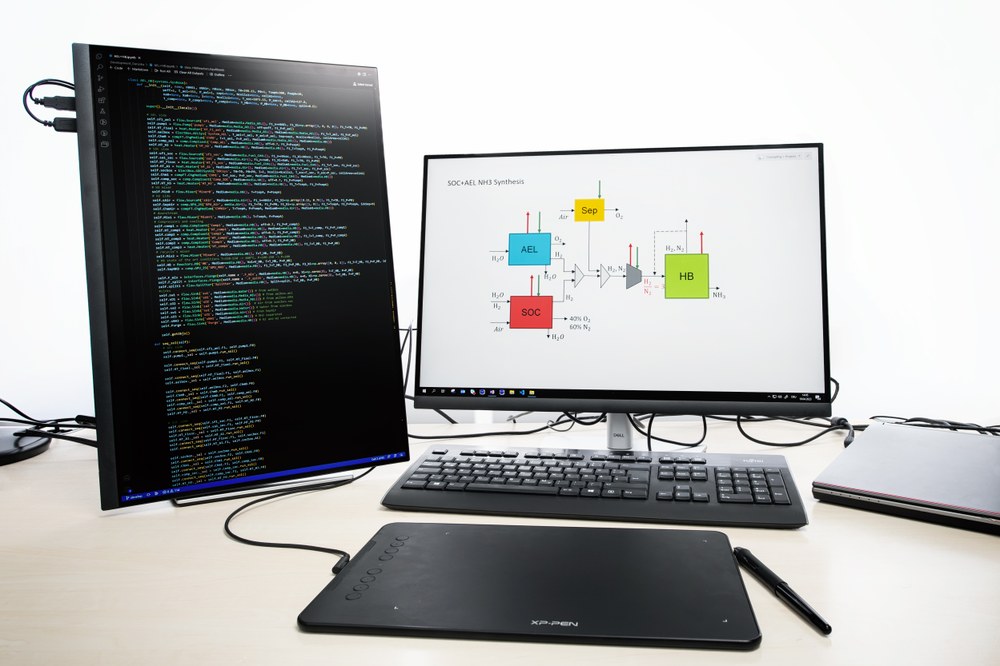CELESTE
The modeling framework CELESTE (Conceptual design of ELectrochemical procEss SysTems and Exergy analysis) from the DLR Institute of Engineering Thermodynamics in Stuttgart offers the possibility of quickly creating conceptual models for process systems with electrochemical reactors. The framework allows users to efficiently solve mass and energy balances, form heat exchanger networks and perform exergy analysis for these reactive systems using simplified models of reactors from different manufacturers as well as models of standard process units.

Research objectives
CELESTE is used to create and evaluate conceptual process designs in electrochemical process systems. The main area of application is PtX systems, in which the electrochemical reactors are used to produce hydrogen or synthesis gas, which then react in further processes to produce high-quality chemicals. Such systems can be optimized by adjusting operating conditions and integrating streams to achieve higher yields, lower requirements for thermal energy or electricity, etc. CELESTE aims to simplify this process.
Due to the various forms of valuable flows in such systems, such as heat, chemicals and electricity, exergy analysis is an extremely useful tool to value the flows on an equal basis as it compares the value of the flow to the "dead state" imposed by the environment . CELESTE allows users to quickly perform exergy analysis to holistically evaluate such process systems.
The conceptual process design is used as a preliminary study for the design of our experiments and transient simulations. Here CELESTE offers an important interface for the synergistic interaction between our different research pillars. The experiments performed on our unique test benches HORST and GALACTICA provide useful data for validating our models, and the simulations on CELESTE provide important information for planning experiments and transient simulations on TEMPEST. This is further enhanced by the ability to quickly perform optimization studies to find the best parameters for operation.
Important details
Written in Python®, the framework makes it easy to read and write models and integrate with external open source libraries
The framework enables easy development of process units and systems, including electrochemical reactors such as SOCs and AEL. Users can take advantage of the standard library, which contains many 0D models, or create their own models with different levels of resolution. The standard library also contains examples of liquids with thermodynamic properties based on the EoS for ideal gases. Other EoS can be integrated and work is underway to expand the library of thermodynamic properties.
Models can be created that take into account various phenomena such as heat transfer, thermodynamics and kinetics. Circuits and heat integration can also be included at the system level.
Projects
HTCoEl
H2Mare
H2Giga-AEL4GW
SOL
Publications
Miric-Fuentes, D., et al. (2022). Power-to-Methane über H2O/CO2 Co-Elektrolyse Integration: A Conceptual Performance Assessment on Methanation Off-gas Recirculation using Exergy Methods. 21. Workshop zur Integration von Wind und Sonne. Den Haag, Niederlande.
